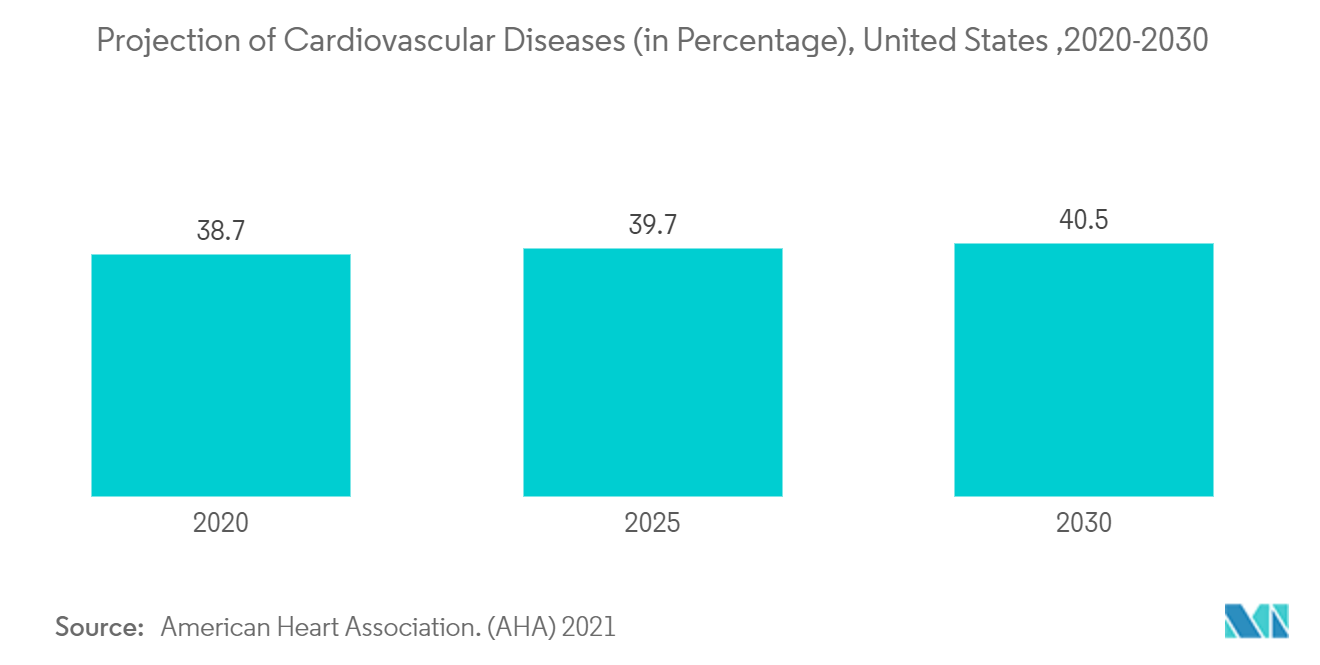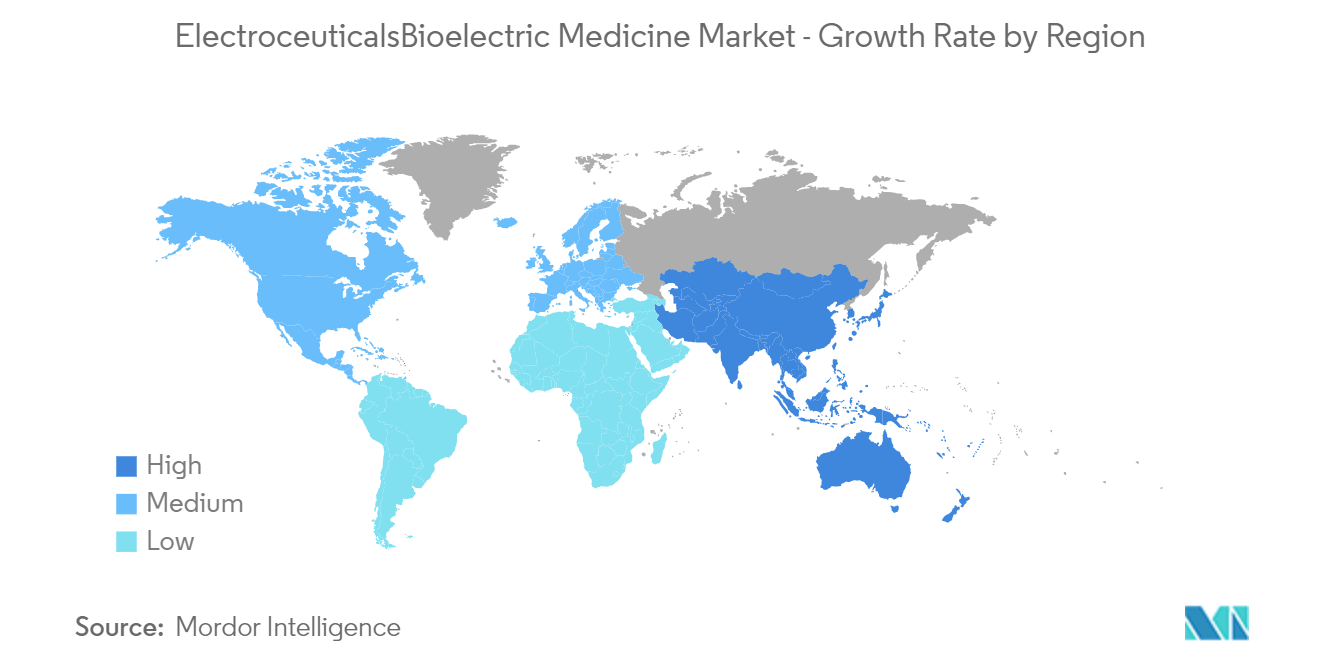Market Trends of Global Electroceuticals/Bioelectric Medicine Industry
This section covers the major market trends shaping the Electroceuticals/Bioelectric Medicine Market according to our research experts:
The Arrhythmia Segment is Expected to Hold a Major Market Share in the Electroceuticals/Bioelectric Medicine Market
The Arrhythmia segment is expected to hold a major market share in the growth of the market during the forecast period. The rising prevalence of arrhythmia is the major factor driving market growth as per the article published in February 2021 titled 'Global Epidemiology of Atrial Fibrillation: An Increasing Epidemic and Public Health Challenge,' Atrial fibrillation is the most frequent cardiac arrhythmia. It has been estimated that 6-12 million people worldwide will suffer from this condition in the United States by 2050 and 17.9 million people in Europe by 2060. Atrial fibrillation is a major risk factor for ischemic stroke and provokes an important economic burden along with significant morbidity and mortality. Also, according to the National Center for Chronic Disease Prevention (CDC) and Health Promotion, Division for Heart Disease and Stroke Prevention facts updated on September 2021, it is estimated that 12.1 million people in the United States will have Atrial fibrillation (AFib) in 2030. According to the same source, more than 454,000 hospitalizations with AFib as the primary diagnosis happen yearly in the United States.
Furthermore, the products such as defibrillators and pacemakers are widely accepted by the population, which is also boosting the market growth. Additionally, growing technological advances and product approvals drive segment growth. For example, in July 2020, Abbott Laboratories received approval from the United States Food and Drug Administration for its Gallant line, which includes an implanted cardioverter-defibrillator and a cardiac resynchronization therapy defibrillator with Bluetooth technology. Advance pacemaker technology features such as remote data tracking devices, secure magnetic resonance imaging (MRI) devices, and data recording functionality enhance segment growth.

North America is Expected to Hold a significant share in the market and is expected to do the Same in the Forecast Period.
COVID19 was temporally associated with an increase in outofhospital cardiac arrests. As per the article published in May 2021 on 'Implantable CardioverterDefibrillator Shocks During COVID19 Outbreak', Defibrillator shock episodes increased during the higher COVID19 activity in New York City, New Orleans, and Boston. COVID19 can affect the cardiovascular system, resulting in myocardial injury, intravascular thrombosis and arrhythmias. Individuals with an implantable cardioverterdefibrillator (ICD) are at increased risk for arrhythmic sudden cardiac arrest. Spikes in ICD shock rates also appeared to be temporally associated with the COVID19 surge. However, the data released from Medtronic's survey on United States population demonstrating several struggles for those with chronic pain during the COVID-19 pandemic found that 44% of current chronic back and leg pain sufferers experienced care delays during the COVID-19 pandemic despite 87% reporting that their pain has not improved - or has even worsened since the pandemic began two years ago in March 2020. The survey also demonstrated that an overwhelming majority want more treatment options, yet awareness of spinal cord stimulation and targeted drug delivery options remains relatively low. That represents an opportunity to educate patients about the full range of options available to help alleviate their pain.
The rising geriatric population, increasing prevalence of chronic diseases, and demand for advanced quality healthcare are putting immense pressure on healthcare to meet the population's increasing demand. As per the United States Census Bureau's 2021 senior report, More than 54 million adults ages 65 and older live in the United States today, accounting for about 16.5% of the nation's population. The number of older adults living in the United States is growing. By 2050, the total number of adults ages 65 and older is projected to rise to 85.7 million, roughly 20% of the overall United States population.
There is an increasing prevalence of infectious and chronic diseases such as cancer, cardiovascular, diabetes, and many more. According to the Global Cancer Observatory (Globocan) Statistics 2020, there were 19.3 million new cases of cancer all over the world, accounting for both sexes in 2020, and the same source reported that the incidence of cancer was growing at a rapid pace in the world and estimated that the number of new cases of cancer in both sexes will reach to 30.2 million by 2040. Hence, this is huge potential for the bioelectric medicine market to quickly diagnose and treat diseases.
Furthermore, the presence of well-established market players such as Biotronik and Medtronic is also supporting the market growth in the region. Besides, favorable government support and regional product approvals also drive market growth. For instance, SetPoint Medical, a privately held clinical-stage bioelectronic medicine company dedicated to treating patients with chronic autoimmune diseases, has got a Breakthrough Device Designation from the United States and Drug Administration for the use of its novel bioelectronic device for patients with rheumatoid arthritis who have an incomplete response to or are intolerant to multiple biologic drugs.


